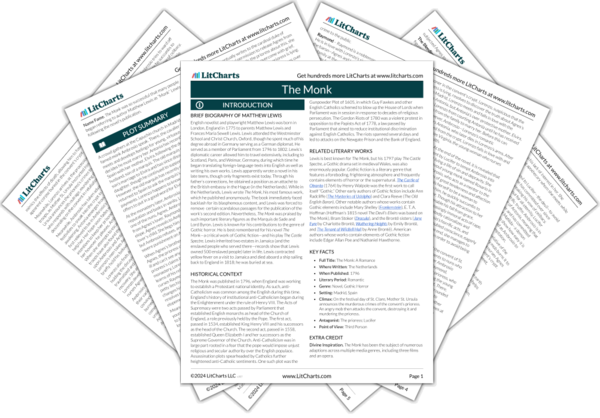Next
Summary
The Monk Study Guide |
Next
Summary
|
Welcome to the LitCharts study guide on Matthew Lewis's The Monk. Created by the original team behind SparkNotes, LitCharts are the world's best literature guides.

Divine Inspiration. The Monk has been the subject of numerous adaptions across multiple media genres, including three films and an opera.
Name Fame. The Monk was so successful that many people began referring to author Matthew Lewis as “Monk” Lewis following the novel’s publication.